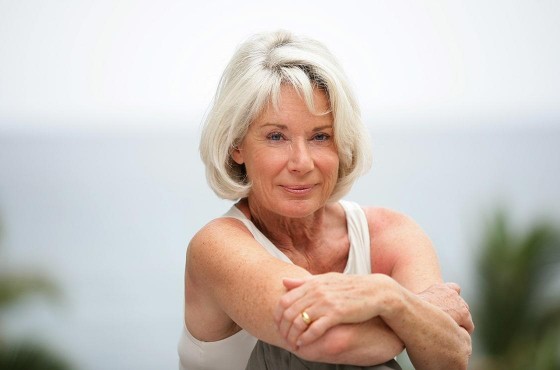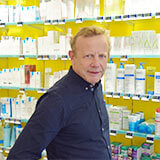Dark spots:
everything you need to know about hyperpigmentation
Written by Paul Musset, Doctor in Pharmacy | published on | updated on 15/04/2024

Associated with ageing skin, dark spots do not only affect the elderly. It is possible for people to be affected by these unsightly marks, especially on their face or hands, from the age of 30 and sometimes even a little earlier. But what is a dark spot? Who is affected? Why do they appear? Is it possible to treat them? How can they be avoided? Here are all the answers to your questions about dark spots.
Dark spots: Better understanding and recognising them
How do they occur?
A dark spot is an accumulation of melanin on an area of the skin. Melanin is a dark brown pigment whose main objective is to protect the skin from ultraviolet rays. It is what gives our body and face that beautiful, coveted tanned complexion, especially in summer. However, sometimes these dark pigments stagnate on the surface, causing a persistent mark. This mark is commonly referred to as a dark spot.
There are two main types of dark spots:
- Melasma: Also known as pregnancy mask, this type of spot is directly related to a hormonal change. Melasma usually appears on the nose, forehead and cheeks in the form of dark patches. These usually disappear when the hormonal balance is restored.
- Lentigo: This is a small round or oval spot that reflects the epidermis’ inability to control the harmful effects of ultraviolet rays.
Dark spots and freckles: What’s the difference?
It is easy to confuse a dark spot and a freckle. However, these epidermal conditions do not have the same characteristics:
• Freckles are genetic and incurable. Their appearance can neither be prevented nor treated;
• Dark spots are most often caused by an external source and can be treated.
Dark spots: The face and hands are the main targets
Technically, hyperpigmentation can affect any part of the body.
In any case, the face and hands, which are much more often exposed to ultraviolet rays, contain more melanin to protect themselves. Therefore, dark spots appear more easily in these areas.
Who is concerned?
Pigmentation marks are often associated with old age. In reality, this is only partly true. As the skin ages, it controls the effects of ultraviolet rays less and less. That is why an elderly person is naturally more prone to dark spots.
However, even younger individuals may one day be affected by dark spots. Indeed, as you will read in later in this article, the skin can be the victim of premature ageing due to a lack of care.
Furthermore, women are more often affected by an outbreak of dark spots, particularly for hormonal reasons.
Dark spots: Why do they appear?
The sun, the main trigger factor
As you read above, melanin serves as a natural protection against aggressive ultraviolet rays. Moreover, to be more precise, it is melanocytes (cells that pigment the skin) that create a barrier against the sun by synthesising the melanin that will spread over the skin. However, excessive exposure and poor sunscreen protection can lead to anarchic distribution. This is when dark spots appear.
Other causes
There are other factors that favour hyperpigmentation:
- Post-inflammatory lesions such as acne, a cut or a burn can leave a mark on the affected areas, especially when the healing was not without complications.
- Hormones: The hormonal change experienced by pregnant women makes them more vulnerable to sun exposure.
- Skin ageing: With age, the skin’s defence mechanism against the sun’s rays becomes difficult to manage. Melanin then concentrates in larger quantities in certain areas. Contrary to what we tend to think, a person’s age is not the only factor that causes skin ageing. Excessive exposure to the sun without protection undeniably leads to the premature ageing of the epidermis.
How to remove dark spots: Treatment and prevention
Depigmentation skincare with unifying active ingredients
The power of acid
Even if pigmentation marks are not a health hazard, their unsightly appearance often does not make the people who suffer from them very happy.
To promote skin depigmentation, at Cocooncenter, we have chosen creams that combine recognised acid-based active ingredients, namely:
- Kojic acid: This has the ability to inhibit pigmentation. Applied to the skin, it reduces melanin production. This is why it is used in anti-dark spot treatments such as the Dermalight mask.
- Glycolic acid: This fruit acid (AHA) has an exfoliating power that is very useful for getting rid of excess melanin. It also ensures the proper penetration of depigmentation active ingredients. Sleep and Peel by Filorga combines the actions of different types of acids to optimise its effectiveness on cell renewal.
Vitamin C, a brightening boost
With its antioxidant power, ascorbic acid (vitamin C) is an essential ally for beautiful skin. It provides protection from aggressions and fights ageing. Furthermore, vitamin C reduces the action of melanin, which makes it a perfect anti-dark spot treatment. In a serum and combined with white dahlia, it provides the skin with the best cellular protection.
Natural treatments
In addition to cosmetic products, natural solutions can help you eliminate pigmentation defects, especially dark spots on the face. These remedies include:
- Lemon: Its pressed juice with a little salt gives it a brightening power. For an effective solution:
- Parsley: Naturally rich in vitamin C, this herb’s antioxidant properties reveal themselves after being infused in boiling water.
Several factors explain dark spots. An acne spot or skin lesion may well promote the development of hyperpigmentation. However, in this specific case, it is focussed solely on the area in question, which makes it easier for the skin to regain its natural colour. Dark spots related to overexposure to the sun are more difficult to remove. Depigmentation skincare rich in active ingredients is very useful for counteracting dark spots. Nevertheless, to avoid prematurely depleting the skin’s sun capital, it is essential to protect it from the harmful effects of ultraviolet rays.
Three key points to remember about dark spots:
- Dark spots are not just related to age.
- The sun is the main trigger factor.
- In case of doubt or persistent dark spots despite treatment, it is recommended you seek the advice of a dermatologist.























